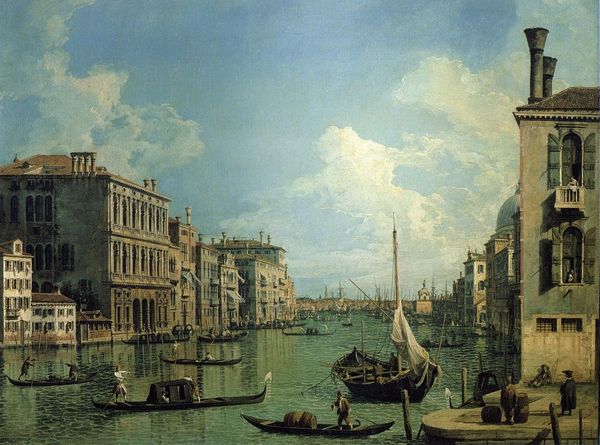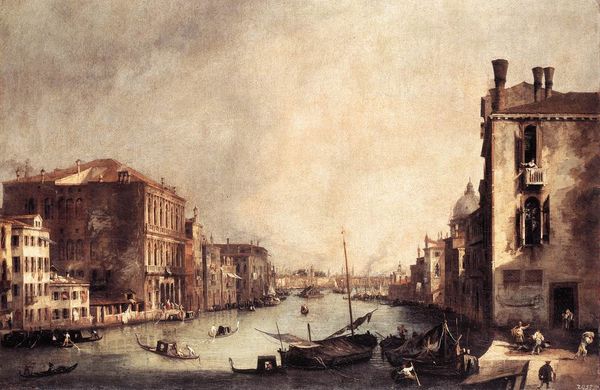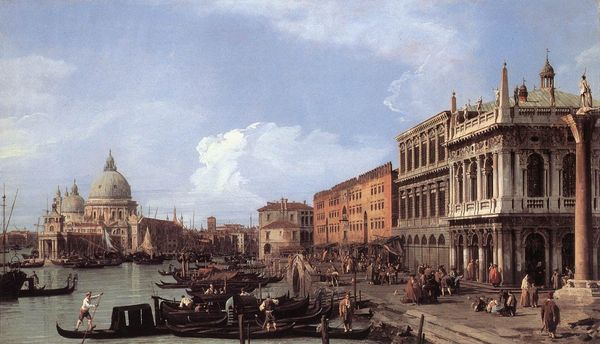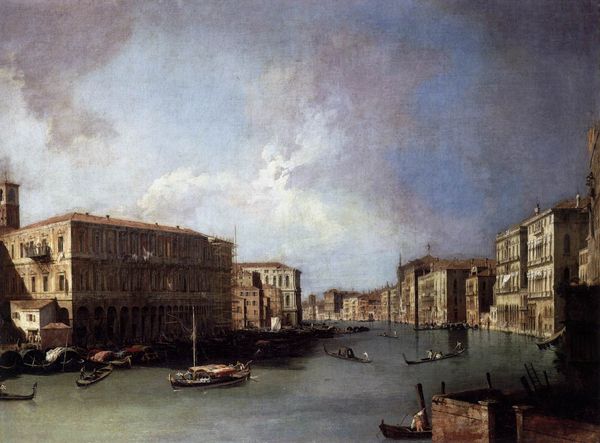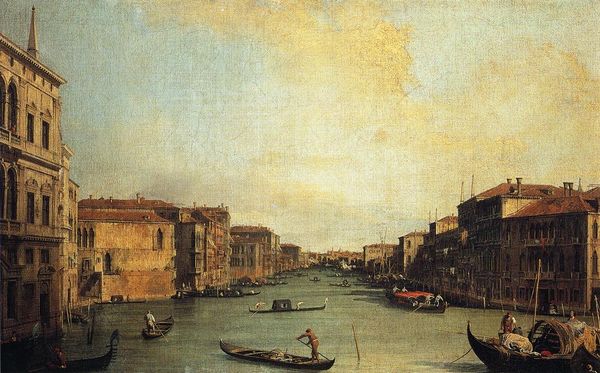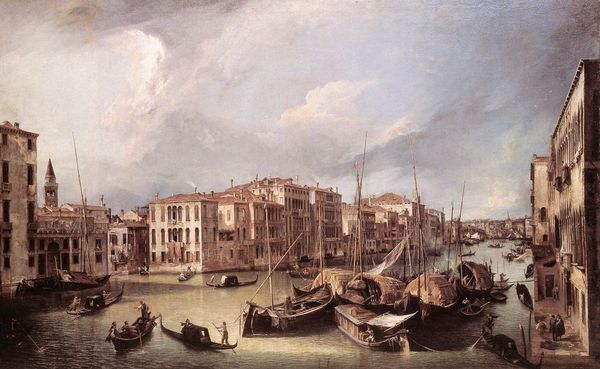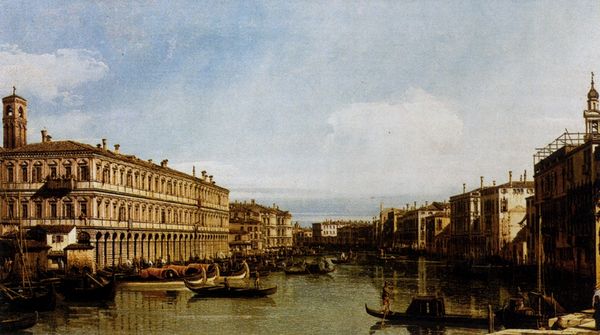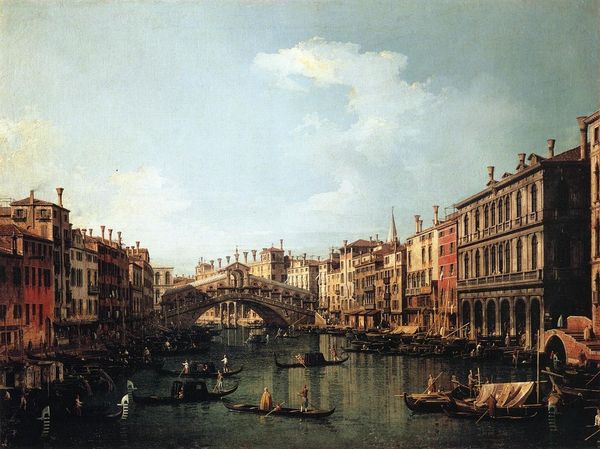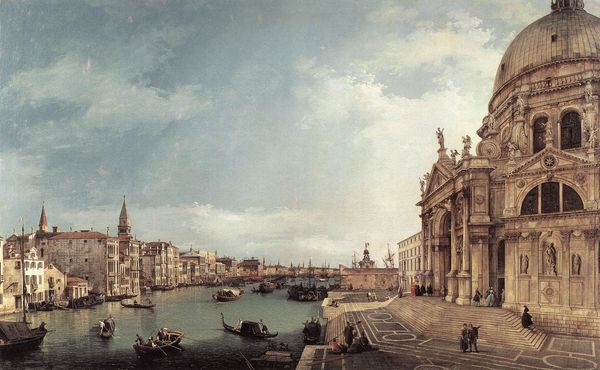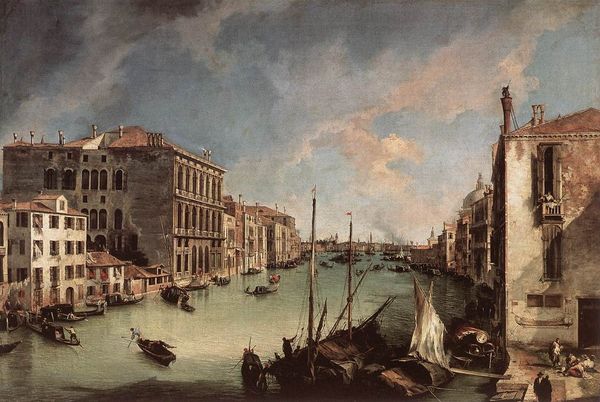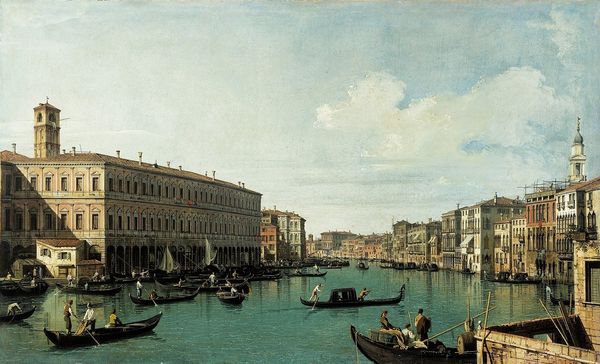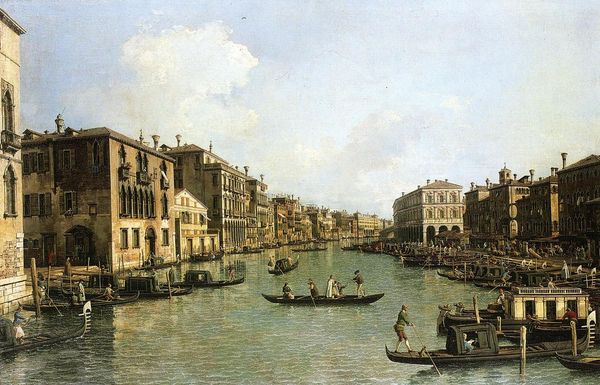
painting, oil-paint
#
boat
#
sky
#
urban landscape
#
venetian-painting
#
baroque
#
painting
#
oil-paint
#
landscape
#
water
#
cityscape
#
genre-painting
#
realism
Dimensions: 77.5 x 46 cm
Copyright: Public domain
Editor: We're looking at "The Grand Canal from Campo San Vio towards the Bacino," painted around 1730 by Canaletto, using oil paint. It's stunning how detailed and calm the scene is; I almost feel like I can hear the gentle lapping of the water. What stands out to you most about this piece? Curator: Oh, it's like stepping into a postcard, isn't it? Canaletto had this amazing gift for capturing Venice. For me, it’s the light. See how it bounces off the buildings, how it shimmers on the water? He wasn't just painting a city; he was painting a feeling, a moment in time. Almost like he wanted you to be right there! Editor: Yes! The light creates such a sense of depth. Do you think he took any artistic liberties with the perspective, or is it true to life? Curator: That’s a juicy question! Canaletto definitely tweaked reality to create the "perfect" view, maybe compressing space a tad here and there. He even used a camera obscura, a device to help him get the perspective just right. It makes me wonder if he was aiming for absolute accuracy, or a more romanticized vision. Editor: A romanticized vision... I hadn’t thought about it that way! Looking at all the boats and the architecture, it makes you wonder what daily life was like back then. Curator: Precisely! Canaletto’s paintings weren’t just pretty pictures; they offer a snapshot into 18th-century Venice. By capturing this intersection between grand architecture and common lives he invites viewers to wonder themselves. What stories are unfolding within these walls, on those boats? Editor: That's such a different perspective than just seeing it as pretty scenery. Curator: Exactly! Next time, I will think twice before saying "what a pretty picture" and instead try to find a narrative of what's beyond the painting itself.
Comments
No comments
Be the first to comment and join the conversation on the ultimate creative platform.
